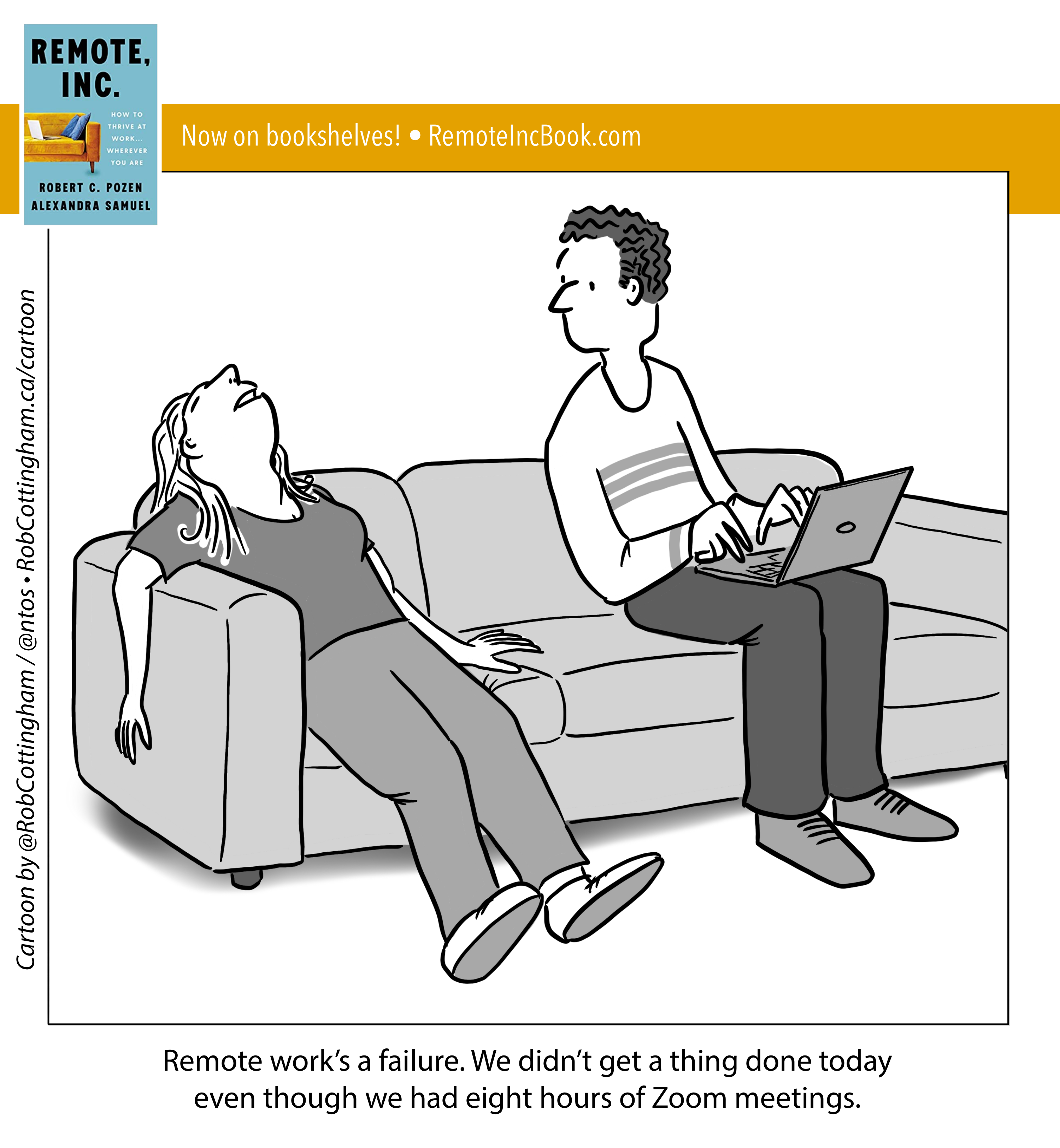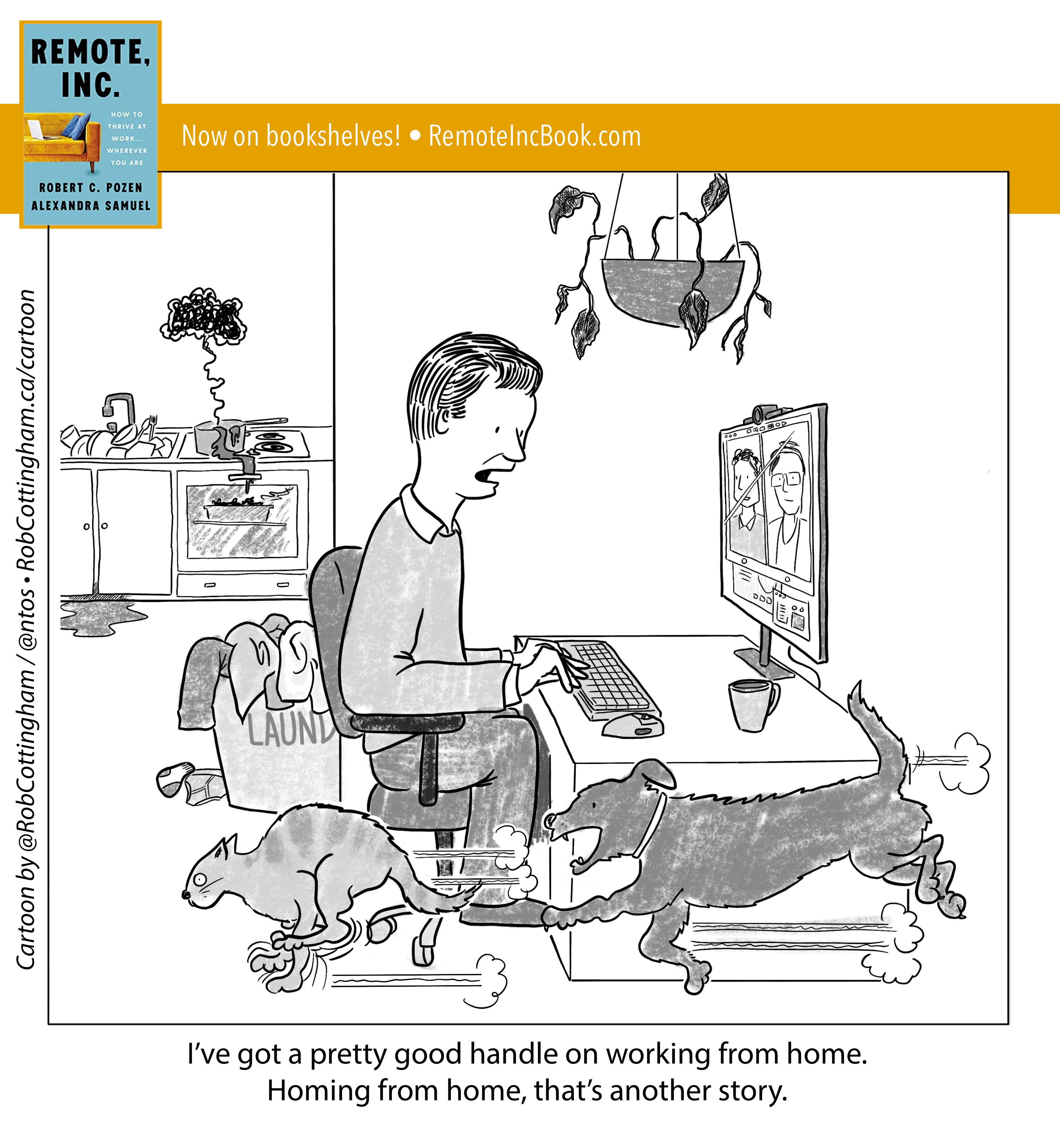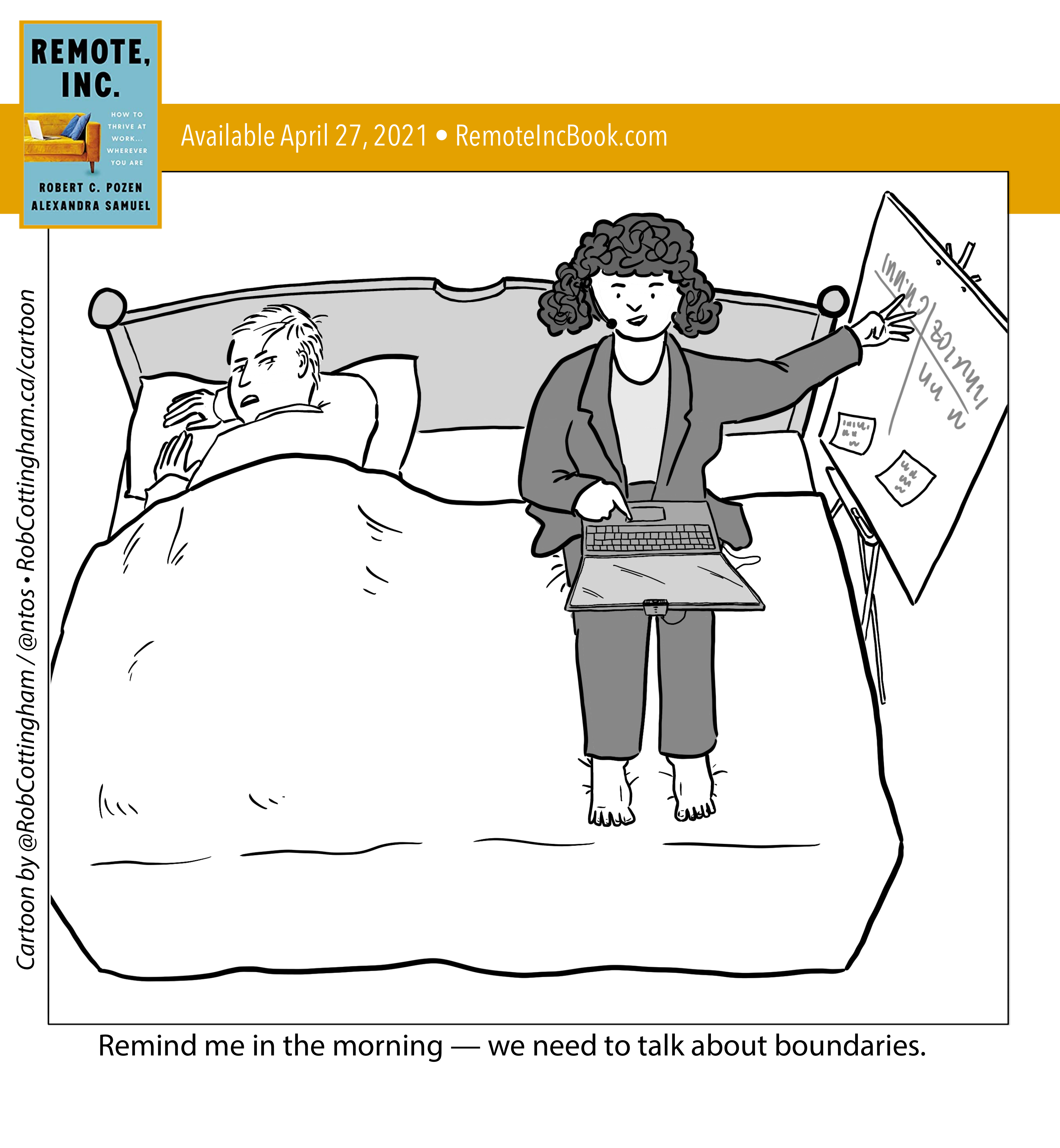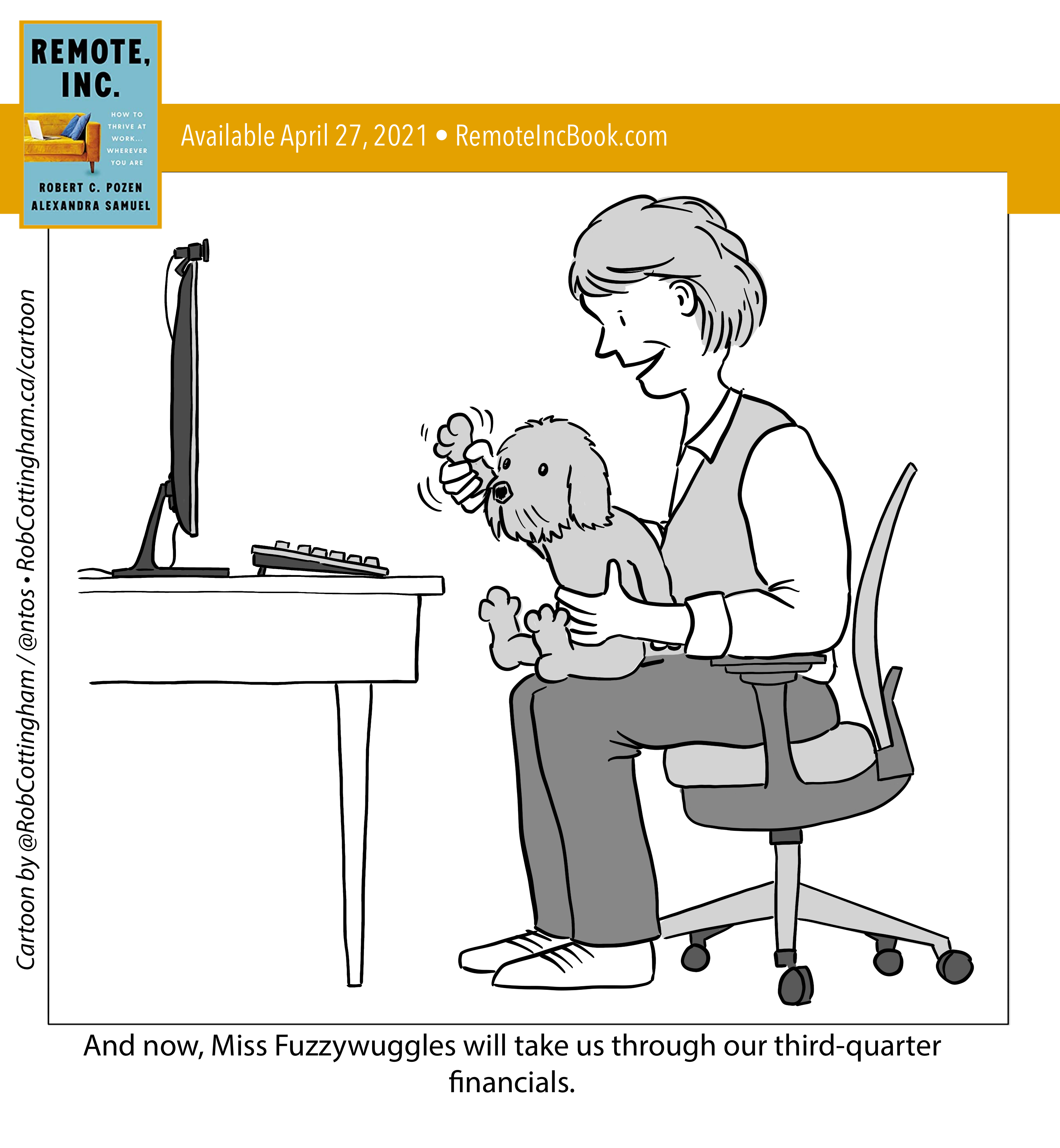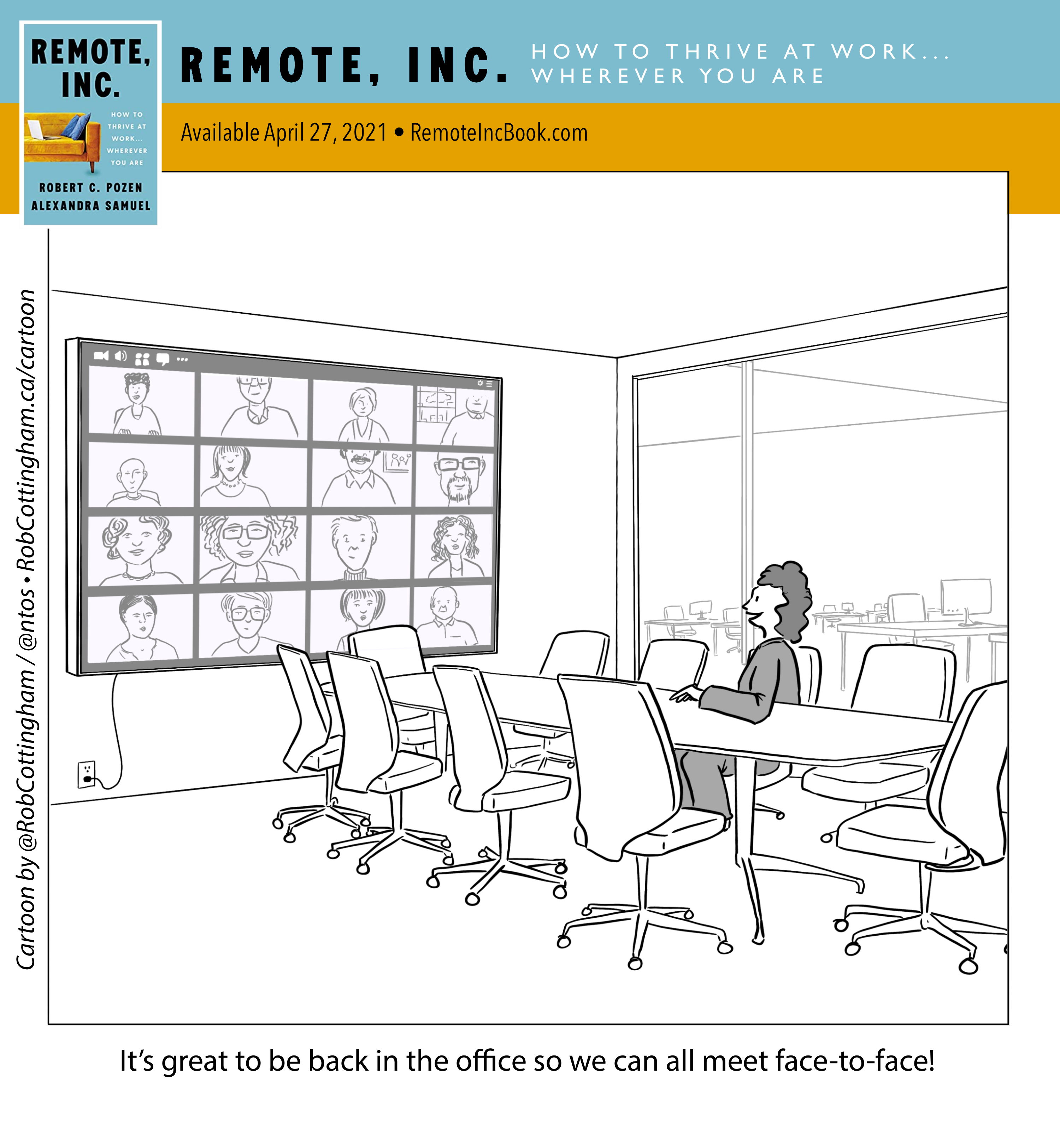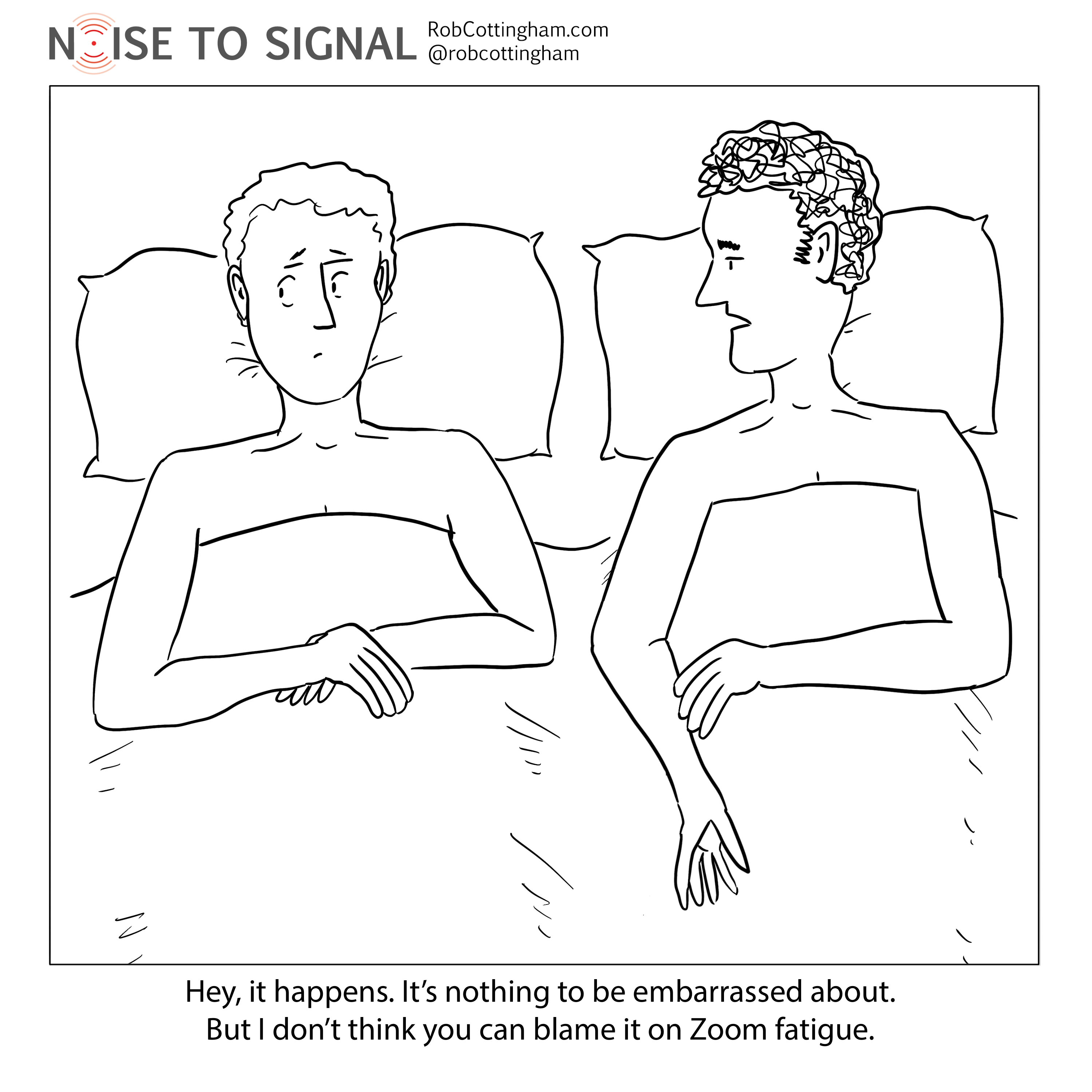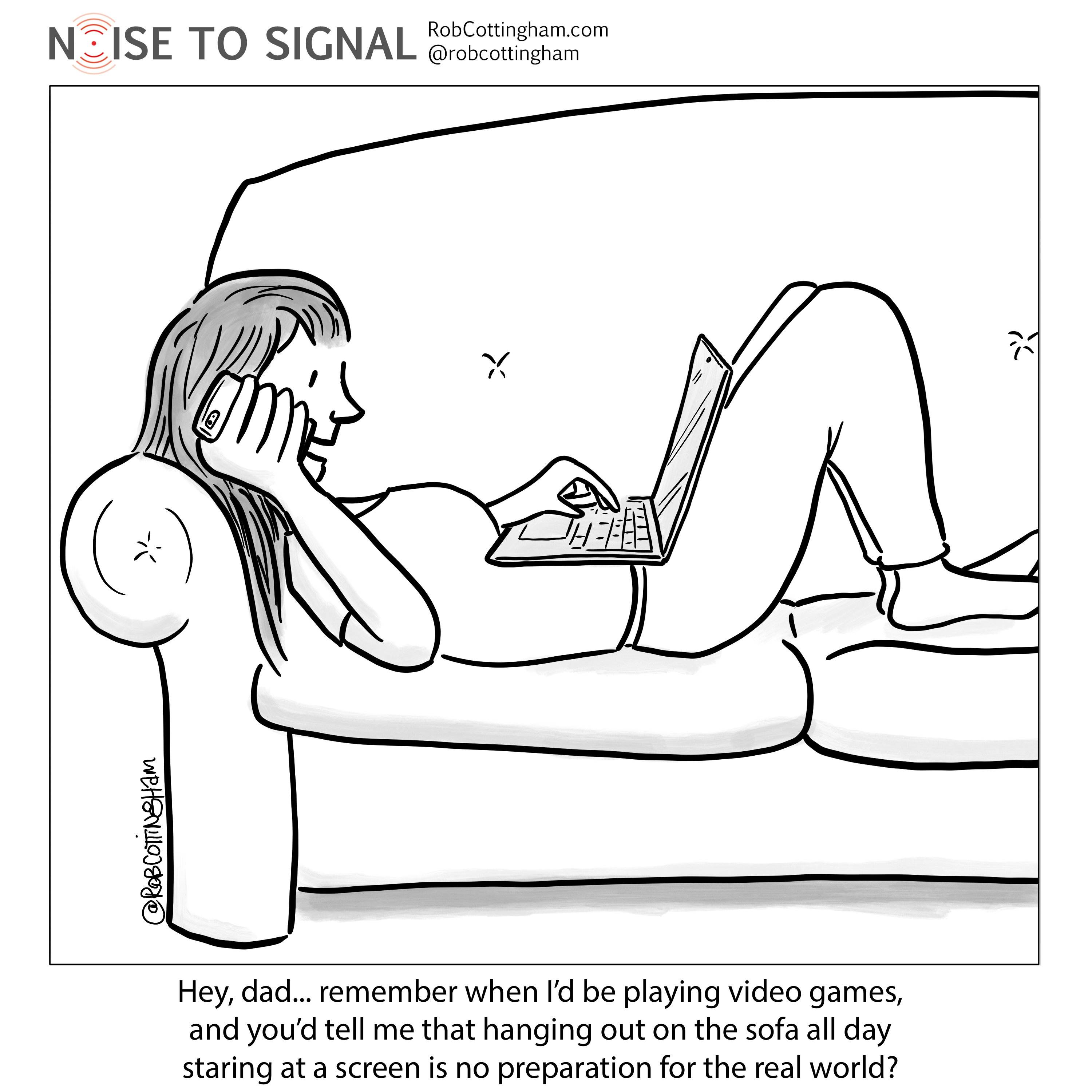Zoom fatigue is the real deal. So says the lived experience of countless folks thrown abruptly into working from home by the pandemic — and so say a number of studies.
One of those studies, from the Stanford Virtual Human Interaction Lab, looked at four factors that might be combining to leave you wiped out at the end of a long Skype, Zoom, Meet or whatever we call a Microsoft Teams video call:
1. So… much… eye contact. Remember in the movie Baby Mama when Steve Martin’s character (the CEO of a chain of Whole-Foods-ish grocery stores) rewards Tina Fey’s character with five minutes of uninterrupted eye contact? Remember how searingly uncomfortable that was? That’s how we live now.
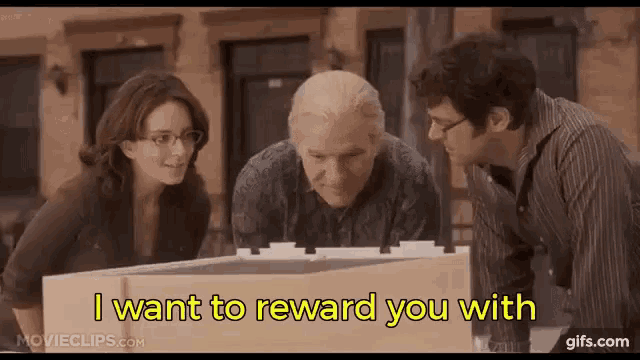
2. It turns out it’s exhausting to see yourself on-screen all the time. Our monitors act as mirrors — constantly on, constantly feeding any insecurities we might have about how others see us. (In related news, this was the year I discovered one of my eyelids is usually not quite as open as the other one.) Also, as it happens, I have the same kind of relationship with mirrors that caged budgies do: I find it impossible not to stare at the image. (The lab’s founding director represents turning your self-view off, by the way.)
3. Not moving is mentally tiring. Our webcams turn out to be mighty effective leashes; we’re inclined to want to stay within their field of view. (I actually talked a little about why speakers should make that leash longer — a lot longer — in one of my podcast episodes a few months ago. You… are subscribed to my podcast, aren’t you?) Zoom fatigue is partly immobility fatigue.
4. Your mind is working a lot harder in a video meeting. Because we aren’t accustomed (yet) to video conversations — unlike face-to-face encounters, which we’ve been practicing every day for decades — there’s a lot less we can leave up to our subconscious to convey to others and interpret from them. So our conscious minds have to ferry that extra cognitive freight. (In Hanna Thomas Uose‘s post The Trauma of Zoom, she argues our heavy reliance on video communications is actually “low-key traumatic,” with our fight-flight-or-freeze mechanism on constant standby.)
All of which is to say, at the end of a long day of video meetings, put your feet up and give yourself a decent break. Then start thinking about how to make those meetings shorter, more productive, fewer and farther between.
Which brings me (deft segue alert!) to Remote, Inc.: How to Thrive At Work… Wherever You Are, the new book from my wife Alexandra Samuel and Robert C. Pozen. It’s your guide to making the most of the new world of blended remote/office work: not just surviving, but thriving. That includes making video meetings work for you (you might actually look forward to your next one!) And this cartoon’s one of a series celebrating its launch.

